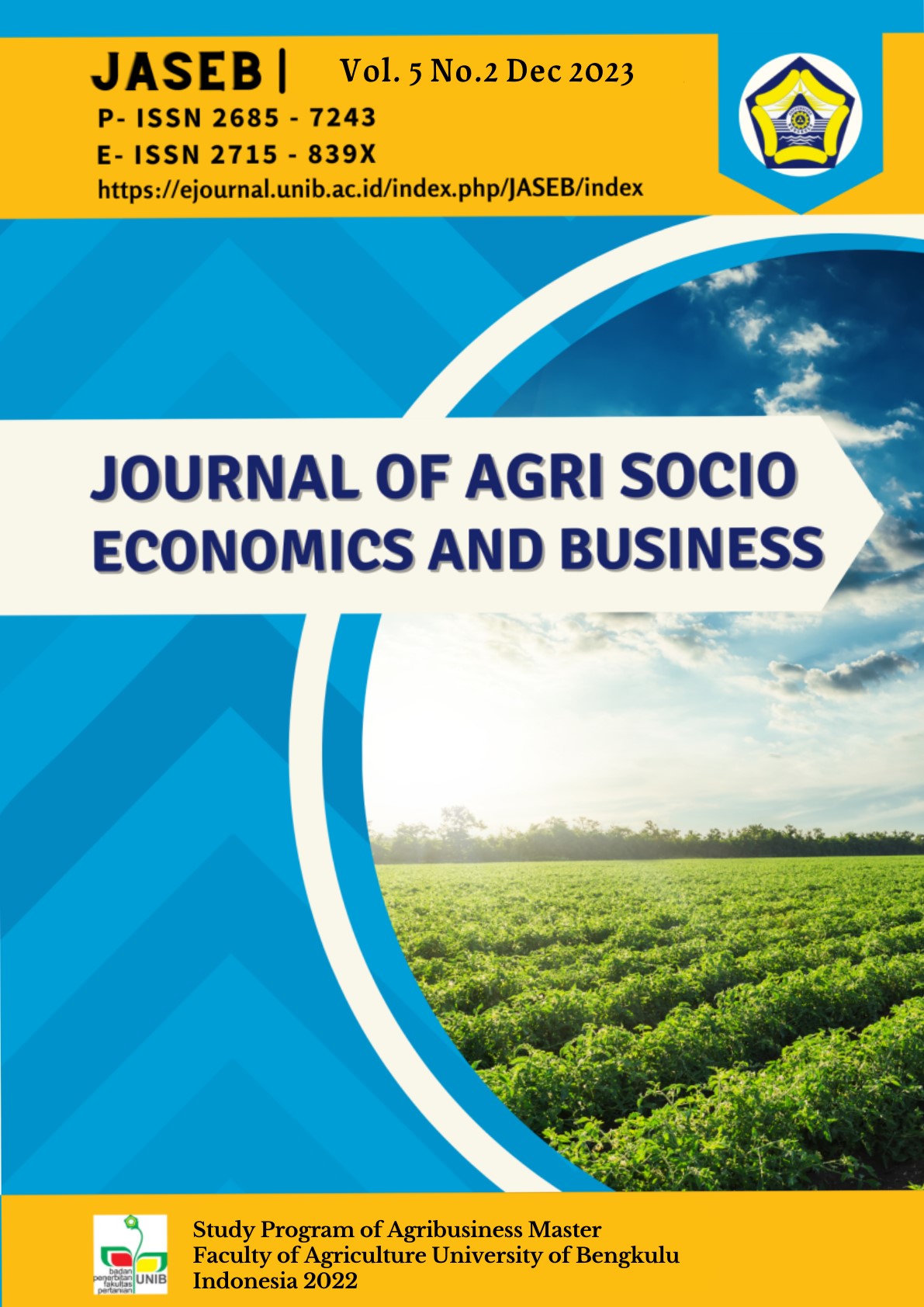Main Article Content
Abstract
This study aims to analyze the optimal use of production factors and business risks in independent palm oil farming. This research was conducted in Jebak, Ampelu, and Ampetu Mudo, Muara Tembesi District villages. The analytical method used is descriptive and quantitative analysis. Descriptive method to see the description of farming. A quantitative method to analyze input usage by using the cobb-Douglas function. The sample villages were determined purposively based on the consideration that the three villages had the largest area of productive plantations (TM). Determination of the number of samples used the census method with a total of 116 respondents. The results showed that (1) palm oil production produced from oil palm farming activities in the study area averaged 15,025.18 kg/ha/year with an average selling price of Rp. 2.208/kg. Farmers operate oil palm farming with a land area of 2.55 ha/farmer, plant age of 10.87 years, fertilizer 243.92 kg/ha/year, herbicides 2.29 liters/ha/year, and labor 88.60 HOK /ha/year. (2). Partially, the variables of land area, plant age, and use of fertilizers have a positive and significant effect on independent oil palm production in Muara Tembesi District, Batanghari Regency, while the variables use of herbicides and use of labor do not have a significant effect on oil palm production. The optimal use of production factors for a land area of 3.82 ha and fertilizer use is 1,053.55 kg/ha/year. (3). Independent oil palm farming is consistently profitable, with a CV value <0.5, the L value > 0, and the R/C value obtained is R/C = 4.45 per farmer and R/C = 4.48 per hectare.
Article Details
Copyright (c) 2023 Zulkilfi Alamsyah, Suandi, Yusma Damayanti, Riri Oktari Ulma, Endy Effran

This work is licensed under a Creative Commons Attribution-ShareAlike 4.0 International License.
An author who publishes in the Journal of Agri Socio Economics and Business agrees to the following terms:
Author retains the copyright and grants the journal the right of first publication of the work simultaneously licensed under the Creative Commons Attribution-ShareAlike 4.0 License that allows others to share the work with an acknowledgement of the work's authorship and initial publication in this journal
Submission of a manuscript implies that the submitted work has not been published before (except as part of a thesis or report, or abstract); that it is not under consideration for publication elsewhere; that its publication has been approved by all co-authors. If and when the manuscript is accepted for publication, the author(s) still hold the copyright and retain publishing rights without restrictions. For the new invention, authors are suggested to manage its patent before published. The license type is CC-BY-SA 4.0.
Journal Agri Socio-Economics and Business is licensed under a Creative Commons Attribution-ShareAlike 4.0 International License.
